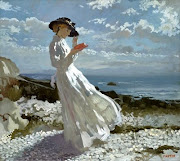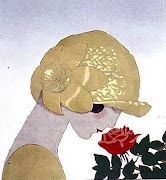












The History of Valentine's Day
Every February, across the country, candy, flowers, and gifts are exchanged between loved ones, all in the name of St. Valentine. But who is this mysterious saint and why do we celebrate this holiday? The history of Valentine's Day — and its patron saint — is shrouded in mystery. But we do know that February has long been a month of romance. St. Valentine's Day, as we know it today, contains vestiges of both Christian and ancient Roman tradition. So, who was Saint Valentine and how did he become associated with this ancient rite? Today, the Catholic Church recognizes at least three different saints named Valentine or Valentinus, all of whom were martyred. One legend contends that Valentine was a priest who served during the third century in Rome. When Emperor Claudius II decided that single men made better soldiers than those with wives and families, he outlawed marriage for young men — his crop of potential soldiers. Valentine, realizing the injustice of the decree, defied Claudius and continued to perform marriages for young lovers in secret. When Valentine's actions were discovered, Claudius ordered that he be put to death.
Other stories suggest that Valentine may have been killed for attempting to help Christians escape harsh Roman prisons where they were often beaten and tortured.
According to one legend, Valentine actually sent the first 'valentine' greeting himself. While in prison, it is believed that Valentine fell in love with a young girl — who may have been his jailor's daughter — who visited him during his confinement. Before his death, it is alleged that he wrote her a letter, which he signed 'From your Valentine,' an expression that is still in use today. Although the truth behind the Valentine legends is murky, the stories certainly emphasize his appeal as a sympathetic, heroic, and, most importantly, romantic figure. It's no surprise that by the Middle Ages, Valentine was one of the most popular saints in England and France. While some believe that Valentine's Day is celebrated in the middle of February to commemorate the anniversary of Valentine's death or burial — which probably occurred around 270 A.D — others claim that the Christian church may have decided to celebrate Valentine's feast day in the middle of February in an effort to 'christianize' celebrations of the pagan Lupercalia festival. In ancient Rome, February was the official beginning of spring and was considered a time for purification. Houses were ritually cleansed by sweeping them out and then sprinkling salt and a type of wheat called spelt throughout their interiors. Lupercalia, which began at the ides of February, February 15, was a fertility festival dedicated to Faunus, the Roman god of agriculture, as well as to the Roman founders Romulus and Remus.
What Does Your Valentine's Day Bouquet Really Mean?
After researching the meanings of various flowers, one of Marie Claire's dating bloggers shares what he's learned and customizes arrangements for a gamut of lovers and relationships. Valentine's Day means candy, romantic dinners and, of course, flowers. I was astounded to find how many meanings there were for flowers beyond "white rose means friendship" and "red rose means love". After learning about the significance of certain flowers, I realized that I could be a florist and use floral symbolism to create bouquets for any type of lover who came in.
By Rich Santos
.jpg)










.jpg)


.jpg)


.jpg)
.jpg)



















.jpg)
.jpg)
.jpg)
.jpg)
.jpg)








.jpg)
.jpg)


.jpg)
.jpg)
.jpg)



.jpg)

.jpg)





.jpg)







.jpg)




















Nenhum comentário:
Postar um comentário